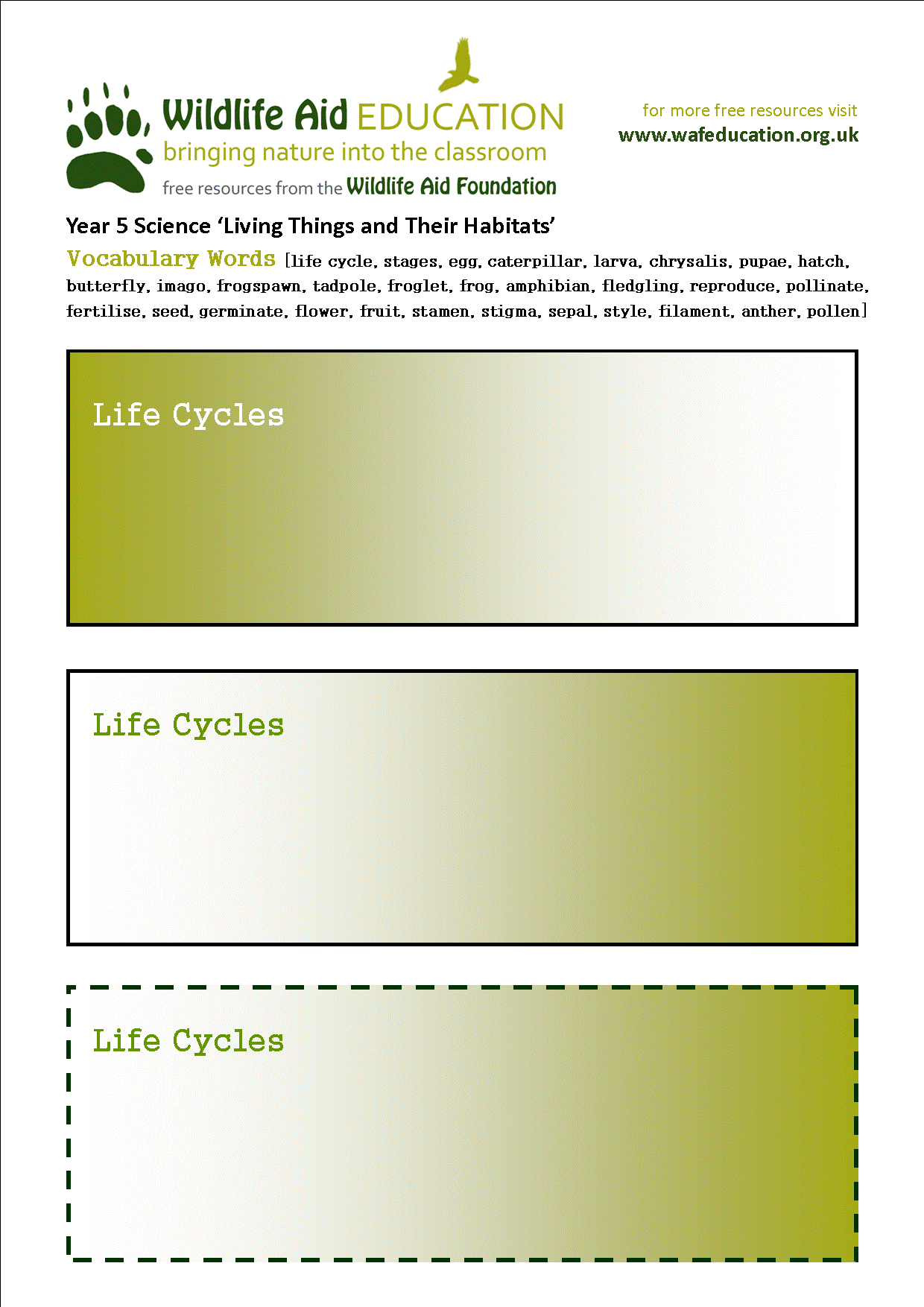




sound on/off
welcome to our website of completely free natural world resources for teachers, schools, parents and children
Learning Objectives
By the end of these two lessons pupils should;
-
Demonstrate and record practical application of classification to living things in their local environment
Resources
-
Powerpoint: 'pages from a local habitat guide'
Vocabulary
habitat, biodiversity, evidence
Pre-Field Trip (Lesson 3)
1. Teaching Point/Class Discussion:
Recap principle and purpose of a classification key and system.
2. Class Activity:
Watch Powerpoint: 'pages from a local habitat guide'.
3. Teaching Point/Class Discussion:
Introduce concept of the children making a guide to the chosen local habitat. Brainstorm what sections it might have.
4. Group Activity (these will be the groups for the field study project):
Look at Classification chart. What living things do they think they are likely to encounter, and where would they fit on the chart?
Field Trip (Lesson 3)
1. Group Activity: Field Trip
a. Visit school grounds/local park/local garden - wherever offers the most bio-diversity.
b. Children choose widest possible selection of living things, and take photographic/sample evidence as appropriate.
Post-Field Trip (Lesson 3)
1. Group Discussion:
Children return to classroom. Did their actual findings correlate with their expectations?
Post-Field Trip (Lesson 4)
1. Group Activity:
Children begin to group their field trip selection according to the classification key, and to identify them using whatever means available - internet information, nature field guides etc.
2. Group Activity:
Children decide how their findings can best be presented eg in a book, Powerpoint, tabletop classification display (and recorded photographically).
3. Class Discussion:
Groups share their plans.
4. Group Activity:
Children create their presentations.
5. Class Activity:
Children view and review each other's presentations.
Assessment
................
Downloadable lesson plan and resources
Year 4 - 'Living Things and their Habitats'
Lessons 3 & 4. 'Field Study Booklet' Full lesson plan (downloadable lesson plan and resources at foot of page)


vocabulary cards for unit
click image to download




